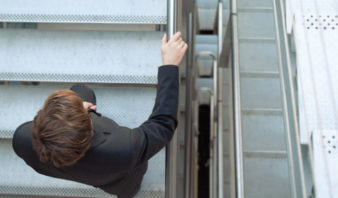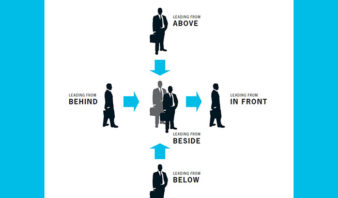People Strategies
Jabian’s People Strategies expertise spans across change management, leadership development, organization design, diversity equity & inclusion, and engagement. The articles included here highlight our perspectives across those topics.
Change Management

Transformation for the People, by the People
How to prioritize people over technology to drive winning transformation.

Building a Strong Organizational Culture Through Effective Change Management
Effective change management is key to fostering a culture of trust, collaboration, and adaptability.

Start Bringing Project Managers and Change Managers Together
Three ways to integrate project managers and change managers so that new initiatives are delivered on time and under budget.

Vintage Change Management Strategies
How pairing a “best-fit” change management approach can be a little like choosing the right wine with your dinner.

The Habit Loop: Managing Change from the Bottom Up
The key to changing your habits is changing your perspective.

Change Management that Sticks
The number one reason change projects fail is a lack of adoption. How can we make change management more effective and ensure new processes and technologies "stick"?

Change Management: The Importance of Aligning Culture With Change
The studies are clear: without aligning the organization’s culture with a change initiative, it will fail.

Maintaining Authenticity When You’re Told You Must Change
Changing behavior based on feedback or self-assessments may benefit you, your team, and the business—as long as you’re transparent and don’t compromise your values.

Consider the Human Element Before Racing Your Next Initiative to the Finish Line
Enhance productivity, communication, and adoption of any major business initiative by incorporating human capital management techniques into the expertise that already exists within your team.
Culture Change

Are You Putting Your Deal at Risk By Not Considering Cultures?
Four keys to mastering cultural alignment during a merger or acquisition.

Making All Employees Feel Valued (Wherever They Are)
Do your employees describe your company the way you do? If not, then it’s time to redefine your Employee Value Proposition.

Transform to Hybrid Work
Hybrid work is here to stay. How do the best transform to make hybrid a success?

Can a Four-Day Workweek Save Us All?
The four-day workweek is not just a trend, but a potentially viable solution to the challenges of modern work-life balance.

Does Your Company Culture Measure Up to Your People’s Needs?
A focus on work-life balance, employee recognition, compensation, and a people-first environment can create a strong corporate culture. What are the strategies for making it happen?

Silence in the Workplace Speaks Loud and Clear
What happens when dissatisfied employees don’t feel free to speak out? We surveyed hundreds of professionals to explore this phenomenon. The results are astounding.

How to Create a Culture of Accountability
It’s not enough to simply demand accountability. Instead, focus the corporate culture growth and accomplishment.

Everybody Wins When Organizations Make Diversity Intentional
Companies must be intentional in modeling diversity across their organization in order to truly promote a culture of inclusion and provide an atmosphere where everyone feels it is a great place to work and build a career.

Engagement with Distributed Teams
Whether your teams are distributed, co-located, or a mix of both, the tenets of engagement are the same. Only the execution is modified.

Problem-Free Is Not Good Enough
Dramatically improve employee performance by adding two new ways of thinking into your strategy.

Employee Feedback and Engagement Maturity Model
Identifying the successful habits of employee engaged companies.

Support Employees in Times of Personal Crisis
Having a plan to recognize and respond to a team member’s difficult times can drive long-term employee engagement — and it’s the right thing to do.
Diversity, Equity, & Inclusion

The Economics of Inclusion: Diversity Isn’t Black and White — It’s Green
How hiring for diversity and inclusion can boost your bottom line.

Five Ways to Find and Attract a More Diverse Talent Pool
Reexamining your recruiting and hiring practices through a diversity, equity, and inclusion lens to create a more diverse talent pool.

Beyond Limitations: Embracing and Empowering the Disability Community at Work
We must dismantle the unconscious biases that hinder the full integration of the special needs community in the workplace.

How Leaders Are Maintaining DEI Momentum
How are DEI leaders keeping both the C-suite and employees engaged in DEI as we drive toward a more equitable world and workplace? We interviewed five dynamic and insightful DEI leaders for their perspectives.

The Economics of Inclusion: Inclusion in Sports
What businesses can learn from the successes and failures of sports inclusion.

The Economics of Inclusion: The Bottom Line Is Built on Inclusive Technology
Investing in the right tools and technologies will open the door for more customers.

The Economics of Inclusion: A Broader Customer Base Is the Bottom Line
A truly inclusive customer experience isn’t just the right thing to implement, it’s a smart business decision.

The Value of Diversity and Inclusion
The true value of Diversity and Inclusion initiatives comes from greater employee engagement and a better chance for financial success.
Employee Engagement

Navigating the Complexities of Hybrid Working
Seven ways to keep your workforce happy and engaged in a post-pandemic world.

Leveraging Governance to Drive Engagement
In this final article of a nine-part series, we examine the last section of the Jabian Engagement Framework: how governance can be used as a lever to influence engagement.

Wellness in the Workplace
Amidst increasing burnout and heightened awareness of well-being post-COVID-19, integrating wellness practices in workplaces and daily life, from flexible work arrangements to prioritizing sleep and outdoor time, has become essential for fostering resilience and productivity.

Business Lessons from History: How Leaders Can Channel Their Own FDR
By prioritizing employee well-being, championing transparent communication, and leveraging technology to deepen relationships, leaders can cultivate a workplace where employees feel valued, supported, and empowered to contribute their best.

Styles at Work: Are Your Policies Influenced by Your Social Media Feed?
How Jabian’s Engagement Framework can help internally assess alignment and foster engagement with your employees.

Quiet Quitting Versus Deliberate Downshifting
How leaders can create a dialogue with their employees that results in positive outcomes and healthier work environments.

How to Use Gamification to Increase Employee Engagement
Creating a holistic workforce gamification strategy can help leaders tackle today’s tight labor market and increase employee engagement and the likelihood of achieving business goals and objectives.

The New Office Experience Is All About Relationships
It's more about relationships than productivity.

The Six Dimensions of Employee Experience That Drive Impact
By understanding the six A’s of employee experience, leaders can design an engaging program that yields maximum business impact.

Levers to Drive Engagement
In this eighth article of a nine-part series started with ‘Exploring the Dynamics of Employee Engagement,’ we look at the next section of the Jabian Engagement Framework: how implementation levers influence engagement.

Start With Alignment
In this seventh article in a nine-part series, we look at the next section of the Jabian Engagement Framework: How alignment can be used as a lever to influence engagement.

Health, Pace, Fun, and Joy: The Role of Well-Being in Engagement
In this sixth piece of a nine-part series, we look at the next section of the Jabian Engagement Framework: How well-being is a critical component to employee engagement.

Exploring the Dynamics of Employee Engagement
How to be a better leader, or a happier person, or both.

Energy and Capability
Over the years, our research has identified several concepts, tools, and techniques that can raise the energy and capability of individuals and organizations to drive productivity, engagement, and fulfillment.

Engagement and Change: Taking the Pulse of Your Stakeholders
How do you increase the likelihood your stakeholders will adopt a change? Find the true drivers behind their motivation to change and their motivation to resist, and you are well on your way. Leaders of change programs often struggle to thoroughly diagnose the positive and negative drivers motivating stakeholders during times of change. Measuring the reaction to a change, either positive or negative, is complex. Unexpected resistance can slow or stop the adoption of a change. Failing to leverage engagement drivers that could motivate change and generate enthusiasm for it can cause unnecessary frustration and cost.

Driving Employee Engagement through Growth
In this first of a nine-part series, we look at one piece of the Jabian Engagement Framework: how growth is a powerful motivator for employees.

Increasing Employee Engagement Through Relationships
In this second piece of a nine-part series, we look at the next section of the Jabian Engagement Framework: How positive, plentiful relationships increase employees’ engagement.

Autonomy and Engagement
In this third piece of a nine-part series, we look at the next section of the Jabian Engagement Framework: How autonomy increases employees’ engagement.

The Cost of Uncertainty
In this fourth piece in a nine-part series, we look at the next section of the Jabian Engagement Framework: How security is essential to employee engagement.

Keep It Fair or Beware
In this fifth segment in a nine-part series, we look at the next section of the Jabian Engagement Framework: How fairness counts as table stakes for employee engagement.

Alignment: Five Things You Need to Get Right Before You Start (Anything)
When not properly aligned, your business is like your back — painful.

Purpose Traceability
How to tie your everyday work to a greater cause, increasing employee engagement, satisfaction, and happiness.
Talent Management

Five Ways to Find and Attract a More Diverse Talent Pool
Reexamining your recruiting and hiring practices through a diversity, equity, and inclusion lens to create a more diverse talent pool.

Winning the War for Talent Requires a New Human Capital Experience
When the new human capital experience becomes part of your culture, it becomes a competitive advantage.

It’s Time for an Employee-Centric Approach to Managing Performance
Performance management practices need to inspire employees to be their best — starting with a culture of continuous improvement and engaging, involved leaders.

The Leadership Pipeline: How Rotational Programs Create the Next Generation of Executives
Why you should establish a leadership development program for young professionals, and how to make your programs self-sufficient and effective.

Are You Overlooking Value in Hidden Talents?
Having improved visibility into their employees’ skill sets can help organizations adapt faster to changing conditions and provide greater career opportunities.

The Five Leadership Positions
What if we considered the term "leadership position" literally? As in the physical and mental position that you take compared to those you are leading?

The Five Leadership Positions
Revisiting an article on leadership from our very first Jabian Journal with lessons that still ring true today.

Inspiring Leaders through Mentoring
Great mentors can be the secret weapon in the success of both employees and the organization. Apply five best practices to get the most out of your mentoring relationships.

The Manager as Leader, Coach, and Enabler
The best managers provide a sense of why their team’s work is important. By enabling and supporting their work, managers ensure team members can more fully contribute.

Leadership Lessons: Five Characteristics of Great Coaches
Some of the greatest leaders in sports history have demonstrated all the characteristics businesses leaders need to succeed.

Lessons from Baseball: Becoming a Stronger Business Leader
Anyone who has ever watched a college football game on TV has likely seen the NCAA commercial noting how few college athletes take their sport to a professional level. While the odds of becoming a professional athlete are extremely low, just being a fan can be rewarding: cheering yourself hoarse with 60,000 other people; experiencing the dramatic comeback of the underdog as the last seconds tick off the game clock; and ultimately celebrating a game — or a season — well-played.

Implementing Strengths-Based Team Management
Take the leap from “fixing weaknesses” to “developing strengths” within a team.

Can Assessments Change Behavior?
Utilize a Johari window to align behavior with perception

The Case for Strengths-Based Team Management
Insight into how success and fulfillment can be predicated on our strengths rather than our weaknesses.

Coaching New Managers to Success
Coaching can help a new manager learn to let go of the past, gain confidence in new skills, and move forward with the role that lies ahead.

Creating Superheroes in Your Organization
Understand the ways so-called “stretch assignments” can reveal leaders and benefit the organization, but remember: You can only pull “Stretch Armstrong” so far before he breaks.

A Model for Mastery: Learning and Development in the Digital Age
Today’s combination of knowledge content and the learning mediums available to access that content offers tremendous flexibility to learning professionals and their constituents. At the same time, that flexibility can overwhelm professionals trying to build and manage learning and development programs. Organizations that are able to harness this flexibility and deploy it to their workforce, however, can increase learning and improve employee engagement.

Reimagining Work: How Will You Organize?
Generational and technological changes demand that organizations rethink how they structure their teams to accommodate collaboration, communication, productivity, and lifestyles.

The Missing Dimension: Work Type and Role Alignment
Is a team member more interested in process, projects, strategy, or data? Misaligning team members and their ‘work type’ can result in stress, burnout, and low engagement.

To Review or Not to Review
Should we rid ourselves of annual performance reviews? Are we even asking ourselves the right question? The trend to eliminate annual performance reviews is part of a growing effort to innovate performance management practices.
